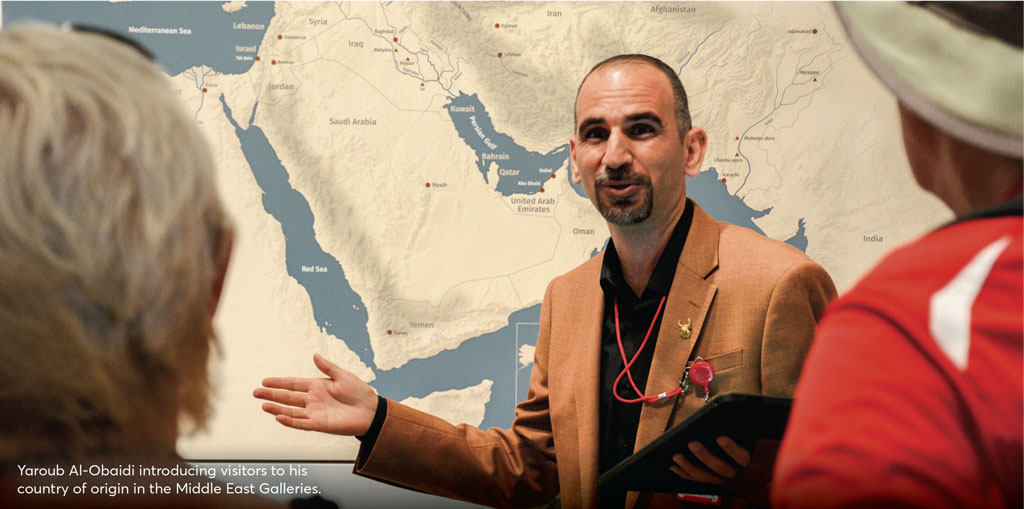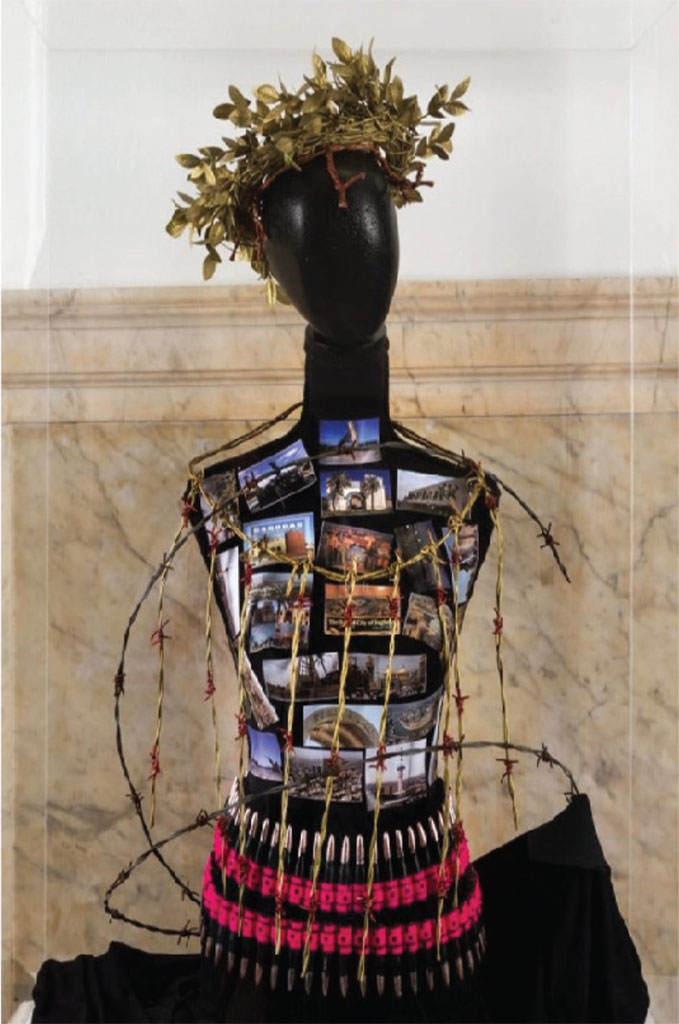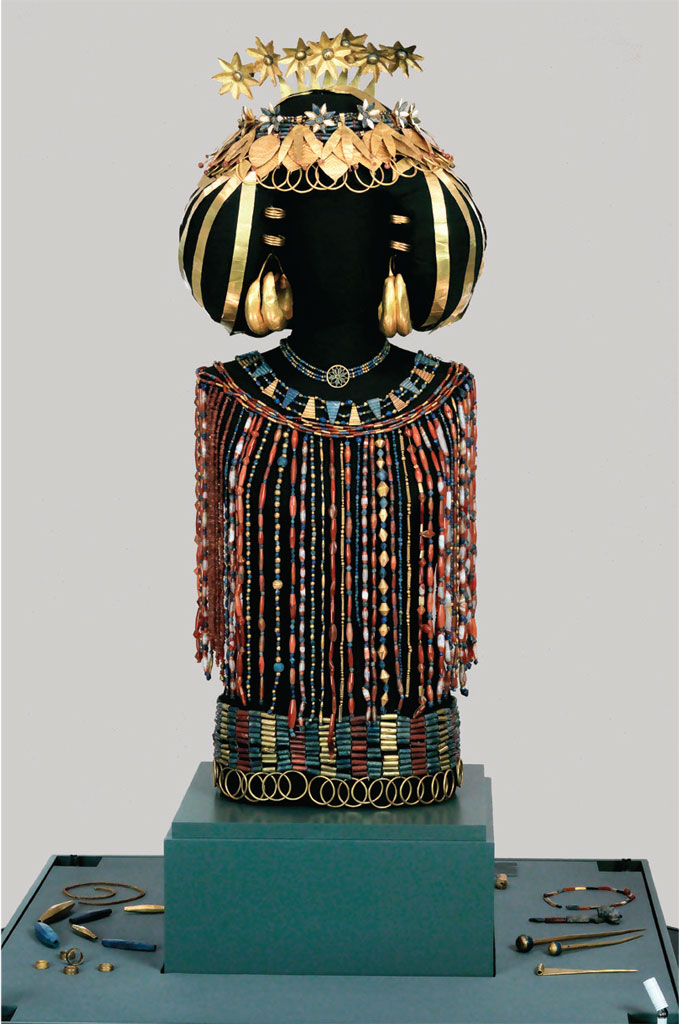Yaroub Al-Obaidi, Global Guide for the Middle East Galleries, drew inspiration from Queen Puabi’s burial headdress and jewelry to create his sculpture for Friends, Peace, Sanctuary, a collaboration between Swarthmore College Libraries and Swarthmore’s Lang Center for Civic and Social Responsibility, connecting local Iraqi and Syrian people who resettled in Philadelphia with art to explore their experiences of displacement and belonging. His piece, Baghdad, has been exhibited at Philadelphia’s City Hall.
As a Global Guide, what do you want visitors to know about Queen Puabi?
YA: I want them to learn everything. But on each stop I have 10 to 15 minutes. I start with a question: How many pounds of gold can you carry on your head? First of all, it’s not a common material in Mesopotamia at that time. And the other thing is, a woman ruled the city of Ur. [Her headdress] is a symbol of power, and a symbol for woman. Abi is father in Arabic; her name means the word of my father. But she’s a queen by herself. We have no information about her father or her husband.

Tell us about the unique perspective you bring to the Global Guides Program as a social artist.
YA: When I started in the Global Guides program in 2018, my concern was to introduce visitors to the Middle East now and to tell them stories—to represent the Museum and at the same time to represent [Iraq], my country of origin, and to engage and make ritual around my tour. This is my concern as a social artist: to connect the past with the present to build the future, to make art more accessible, and to tell the stories through me. Each stop, each artifact, has impact on me as well. From here I start to develop my thinking, develop my practice as a social artist.
How did Queen Puabi inspire your artwork for Friends, Peace, Sanctuary?
YA: I used the concept of a powerful woman to be a city; I combined Puabi with the city of Baghdad. She’s a woman, powerful, queen, but unfortunately, she looks ugly. She is occupied. She is arrested. The beads of the belt for Puabi are bullets. The city is suffering, not free. And if you go to the headdress, it looks golden and nice, but there is a thorn behind it. It’s very painful. This is my reflection about the city and what the city survives. Baghdad is a thousand years old. There have been so many innovations there. But unfortunately, it was chosen worst city in the world to live for a few years. I’m sad for that. So I try to find this relation between Puabi and the city of Baghdad.
Did creating your sculpture change the way you look at the artifact?
YA: I still see the object in the Museum as the best. I made it ugly because I want to share something very sensitive, very critical. I hope by using this very beautiful object, I spark a question: Why did Yaroub do that? The great thing is people want to see the object in the Museum afterward. I still want people to look at Puabi herself; I want them to enjoy that.
Yaroub Al-Obaidi is a Global Guide at the Penn Museum and a social artist collaborating with cultural institutions throughout Philadelphia. He has worked as a designer, author, lecturer, and as a community leader organizing between the Iraqi community and the UN Refugee Agency (UNHCR). He is a Ph.D. candidate in Media and Communication Studies at Indiana University of Pennsylvania and holds master’s degrees in Socially Engaged Art from Moore College of Art and in Industrial Design from the University of Baghdad College of Fine Arts.


